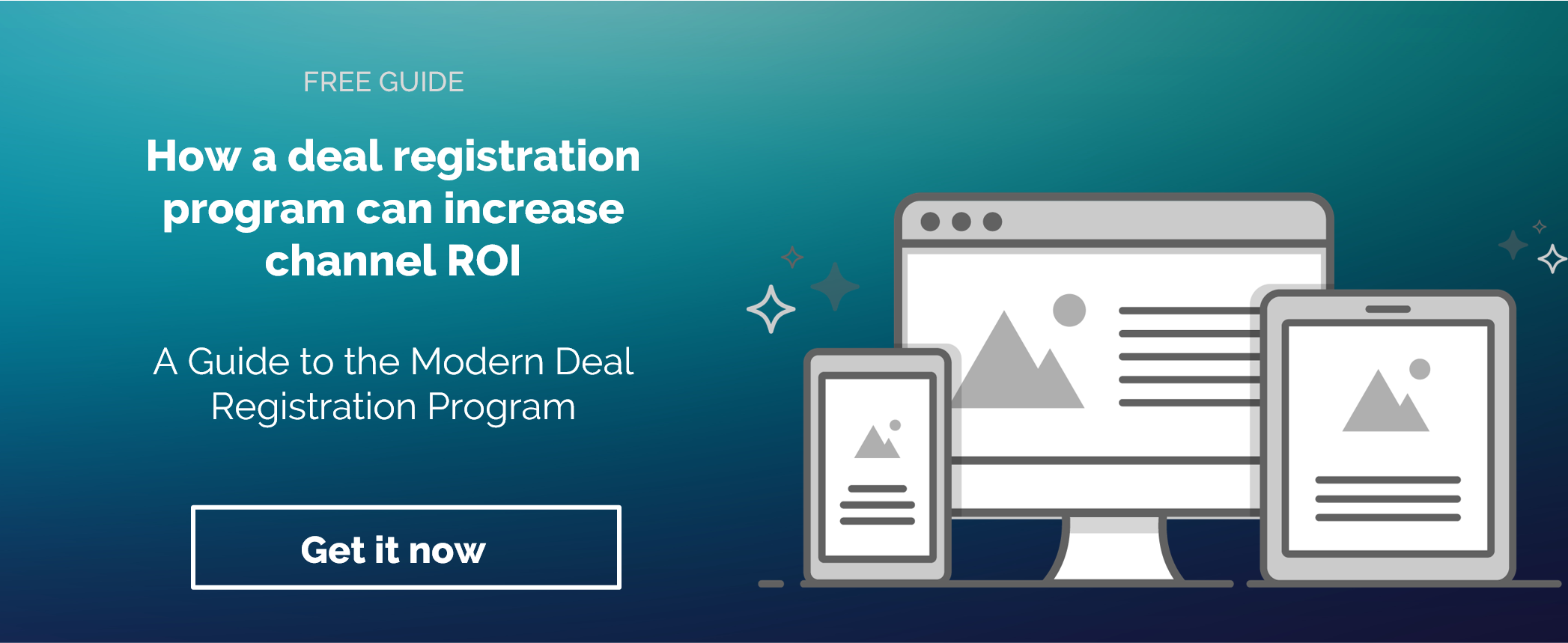In today's competitive business landscape, companies leverage channel incentives and partner ecosystems to strengthen their market position and achieve growth. Channel incentives are rewards from channel partners to motivate and engage them in promoting and selling a company's products or services. These partners, which include resellers, distributors, and other intermediaries, play a critical role in expanding a company's reach and driving sales. This article will delve into various channel incentives, partner incentives, and channel management strategies that can help you optimize your partner ecosystem and achieve your business objectives.
Understanding the Importance of Channel Incentives and Partner Ecosystems
Channel incentives are an essential aspect of channel management, aimed at driving partner performance, boosting customer satisfaction, and increasing revenue. Partner ecosystems comprise various stakeholders, including vendors, service providers, and technology partners, who collaborate and contribute to a company's success. By leveraging the power of channel incentives, businesses can:
- Enhance partner loyalty and commitment
- Encourage partners to prioritize their products or services
- Boost partner performance and sales
- Strengthen relationships with channel partners
- Differentiate themselves from competitors
Types of Channel Incentives and Partner Incentives
Companies can offer several channel incentives to motivate and engage their partners. Some of the most common channel incentives include:
- Volume Incentives: These incentives are based on the volume of products or services a partner sells or the revenue they generate. Examples of volume incentives include tiered discounts, rebates, and performance-based bonuses.
- Market Development Funds (MDF): MDFs are funds provided by a company to help its partners market and promote its products or services. MDF can be used for various marketing activities, such as events, advertising, and training.
- Sales Incentive Programs: Sales incentive programs reward partners who achieve specific sales goals or targets. These programs can include cash rewards, points-based systems, or non-cash incentives such as travel, merchandise, or experiences.
- Training and Certification Incentives: These incentives encourage partners to undergo training and certification programs, which can help them enhance their skills, knowledge, and expertise in a company's products or services.
- Co-op Advertising Programs: Co-op advertising programs involve cost-sharing between a company and its partners for joint marketing and advertising activities, such as trade shows, webinars, or online advertisements.
- Referral Programs: Referral programs are designed to reward partners for referring new customers or leading a company. These programs can include cash rewards or other non-cash incentives.
Channel Management Best Practices
Effective channel management is crucial to the success of any partner ecosystem. Here are some best practices to help you manage your channel partners and optimize your channel incentive programs:
- Set Clear Objectives: Establish objectives and goals for your channel incentive programs. This will help you align your incentives with your business objectives and measure the success of your programs.
- Choose the Right Partners: Select partners who share your company's values, have complementary skills, and can help you reach your target markets. This will enhance the effectiveness of your channel incentives and drive better results.
- Communicate Regularly: Maintain open lines of communication with your partners, sharing relevant information, updates, and feedback. This will help you foster strong relationships and ensure your partners stay motivated and engaged.
- Offer Tailored Incentives: Customize your channel incentives to suit your partners' unique needs, preferences, and goals. This will increase the chances of your incentives resonating with your partners and motivating them to achieve their targets.
- Monitor Performance: Track and measure the performance of your channel incentive programs and partner performance. This will help you identify areas of improvement and make data-driven decisions to optimize your programs.
- Provide Training and Support: Equip your partners with the knowledge, skills, and resources they need to succeed. Offer training, certification programs, and ongoing support to help your partners stay up to date with your products and services.
- Regularly Evaluate and Adjust: Regularly assess the effectiveness of your channel incentives and adjust as needed. This will help you ensure your programs remain relevant and continue to drive desired results.
The Role of Technology in Channel Management and Incentive Programs
Technology plays a significant role in streamlining channel management processes and optimizing incentive programs. Some of the ways technology can support your channel management and incentive efforts include:
- Automation: Automate various aspects of your channel management processes, such as partner onboarding, tracking partner performance, and calculating rewards. This can help you save time and resources while also minimizing errors.
- Data Analytics: Leverage data analytics tools to gain insights into partner performance, customer preferences, and market trends. This can help you make informed decisions and fine-tune your channel incentives and strategies.
- Partner Relationship Management (PRM) Systems: Implement a PRM system to manage your partner ecosystem effectively. A PRM system can help you centralize partner data, track partner performance, manage incentives, and facilitate collaboration and communication.
- Integration with CRM and Marketing Automation Platforms: Integrate your channel management systems with your CRM and marketing automation platforms. This can help you streamline your sales and marketing processes, align your strategies, and improve your partner ecosystem.
Challenges and Potential Pitfalls in Channel Incentive Programs
While channel incentives can deliver significant benefits, there are potential challenges and pitfalls that companies should be aware of. Some of these challenges include:
- Partner Misalignment: Incentive programs may fail if partners' goals and motivations do not align with the company’s. Ensure that your partners share your company's vision and values, and customize your incentives to address their unique needs and motivations.
- Complex Programs: Overly complex incentive programs can confuse partners and reduce their effectiveness. Keep your programs simple and easy to understand, with clear goals, eligibility criteria, and reward structures.
- Insufficient Support: Lack of adequate support and resources can hinder partners' ability to achieve their targets and deliver desired results. Provide your partners with the necessary training, resources, and support to help them succeed.
- Ineffective Communication: Poor communication can lead to misunderstandings, misaligned expectations, and reduced partner engagement. Communicate regularly with your partners, sharing updates, feedback, and relevant information.
Key Metrics for Measuring Channel Incentive Program Success
Measuring the success of your channel incentive programs is essential to ensure they are delivering the desired results and effectively driving partner performance. Here are some key metrics you can use to evaluate the success of your channel incentive programs:
- Return on Investment (ROI): Calculate the ROI of your channel incentive programs by comparing the revenue generated through partner sales to the cost of the incentives offered. A positive ROI indicates that your incentive programs effectively drive sales and revenue.
- Partner Engagement: Monitor partner engagement levels, such as the number of partners actively participating in your programs, the frequency of their engagement, and the quality of their interactions. High partner engagement is an indicator of a successful incentive program.
- Partner Sales Performance: Track partner sales performance, including the number of deals closed, the revenue generated, and the growth in sales over time. This will help you assess the effectiveness of your incentive programs in driving partner sales.
- Partner Satisfaction: Measure partner satisfaction through surveys, feedback, and testimonials. High partner satisfaction levels indicate that your incentive programs resonate with your partners and motivate them to perform.
- Customer Satisfaction: Gauge customer satisfaction levels through surveys, reviews, and feedback. High customer satisfaction can indicate that your partners effectively promote and sell your products or services, thanks to the incentives offered.
- Market Share Growth: Monitor the growth in your market share, as this can indicate the success of your channel incentive programs in driving partner performance and expanding your reach.
Building a Sustainable Partner Ecosystem with Channel Incentives
A sustainable partner ecosystem requires long-term planning, strategic management, and continuous improvement. Here are some tips to help you build a sustainable partner ecosystem with the help of channel incentives:
- Foster Long-term Relationships: Focus on building long-term relationships with your partners rather than just short-term gains. Offer incentives that encourage long-term commitment, such as multi-year contracts or loyalty rewards.
- Collaborate and Co-create: Involve your partners in developing your channel incentive programs, seeking their input and feedback. This can help you create programs that address their needs and motivations, leading to better results.
- Encourage Innovation: Offer incentives encouraging partners to innovate and find new ways to promote and sell your products or services. This can help you stay ahead of the competition and adapt to changing market conditions.
- Focus on Continuous Improvement: Regularly evaluate and adjust your channel incentive programs and your overall partner ecosystem strategy to ensure they continue to deliver results and drive growth.
Conclusion
In conclusion, an effective channel incentives strategy and robust channel management are vital components for a thriving partner ecosystem, which can contribute significantly to your business's overall success. By implementing the best practices and addressing potential challenges outlined in this article, you can optimize your channel incentive programs, driving maximum results and fostering long-term growth.
Continuously evaluating and adjusting your channel incentive programs and overall partner ecosystem strategy ensures they remain relevant and effective. Through strategic channel incentives and a focus on building strong partnerships, your business can achieve greater market reach, increased sales, and long-lasting success in today's competitive landscape.



